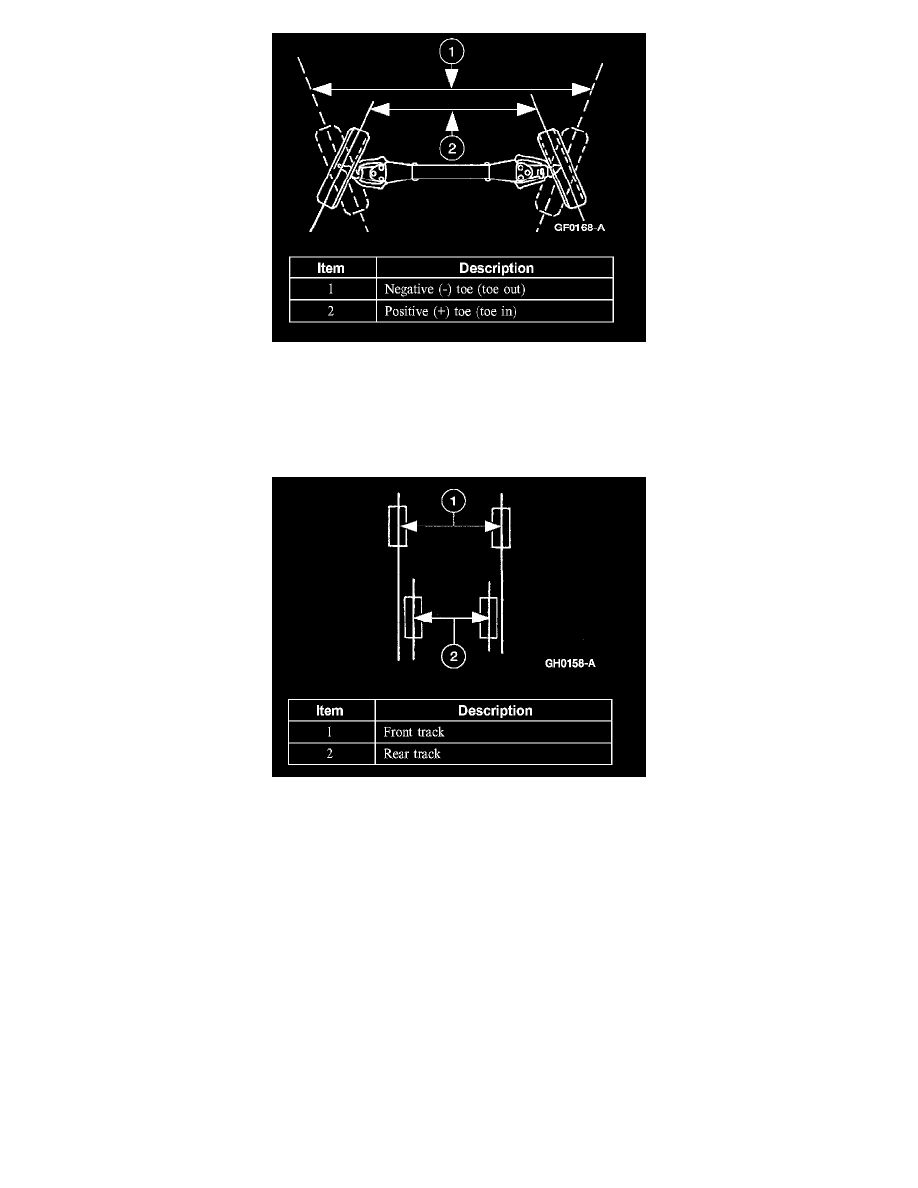Escape 4WD V6-3.0L VIN 1 (2005)

The vehicle toe setting:
^
affects tire wear and directional stability.
^
must be checked after adding aftermarket equipment to the vehicle that affects the suspension system.
When the wheels are turned in toward the front of the vehicle, the toe is positive (+) (toe in). When the wheels are turned out toward the front of the
vehicle, the toe is negative (-) (toe out). This is measured in degrees, from side-to-side, and totalled.
Wheel Track
Rear Thrust Angle
^
Rear thrust angle can be defined as a line bisecting the rear toe or simply the direction in which the rear wheels are pointed.
^
Rear thrust angle = (LR toe - RR toe).
^
If the rear wheels are pointed to the right, the thrust angle is positive; if the rear wheels are pointed to the left, the thrust angle is negative.
Wander
Wander is the tendency of the vehicle to require frequent, random left and right steering wheel corrections to maintain a straight path down a level
road.
Dog Tracking
Dog tracking is the condition in which the rear axle is not square to the chassis. Heavily crowned roads can give the illusion of dog tracking.
Shimmy
Shimmy, as experienced by the driver, is large, consistent, rotational oscillations of the steering wheel resulting from large, side-to-side (lateral)
tire/wheel movements.
Shimmy is usually experienced near 64 km/h (40 mph), and can begin or be amplified when the tire contacts pot holes or irregularities in the road
surface.
